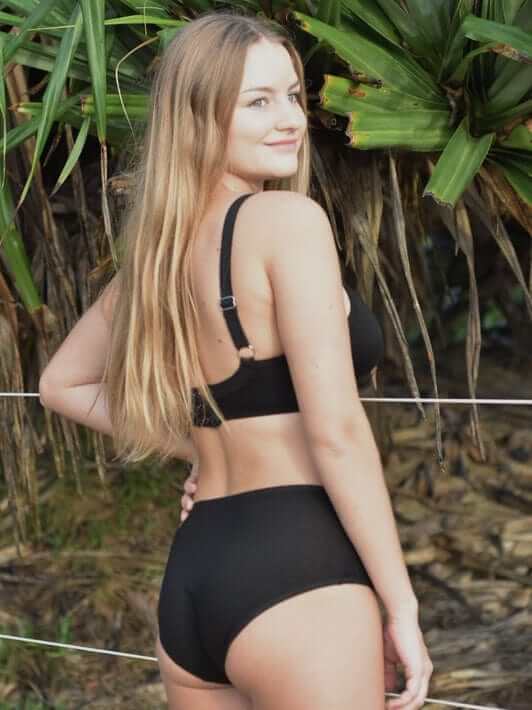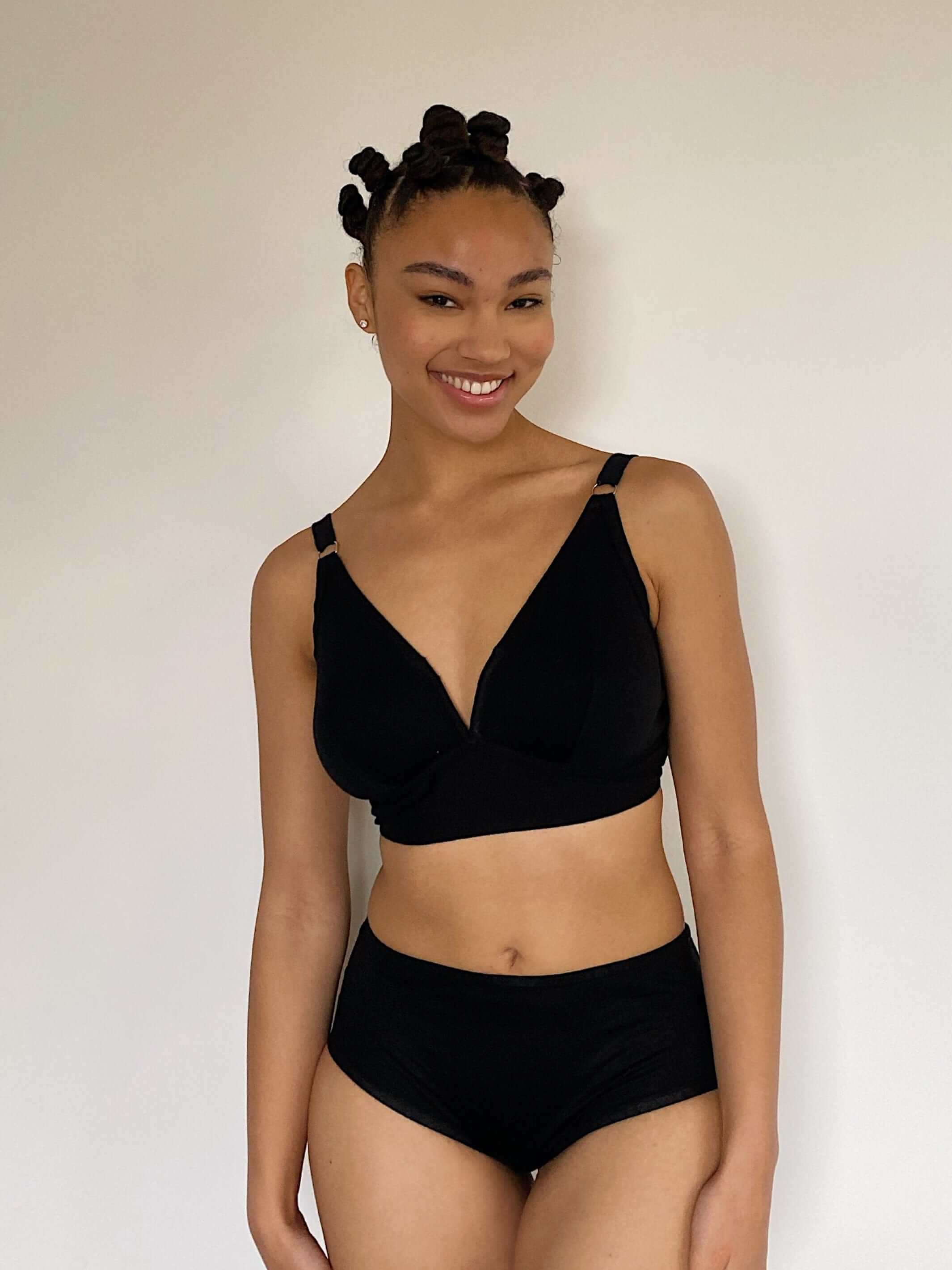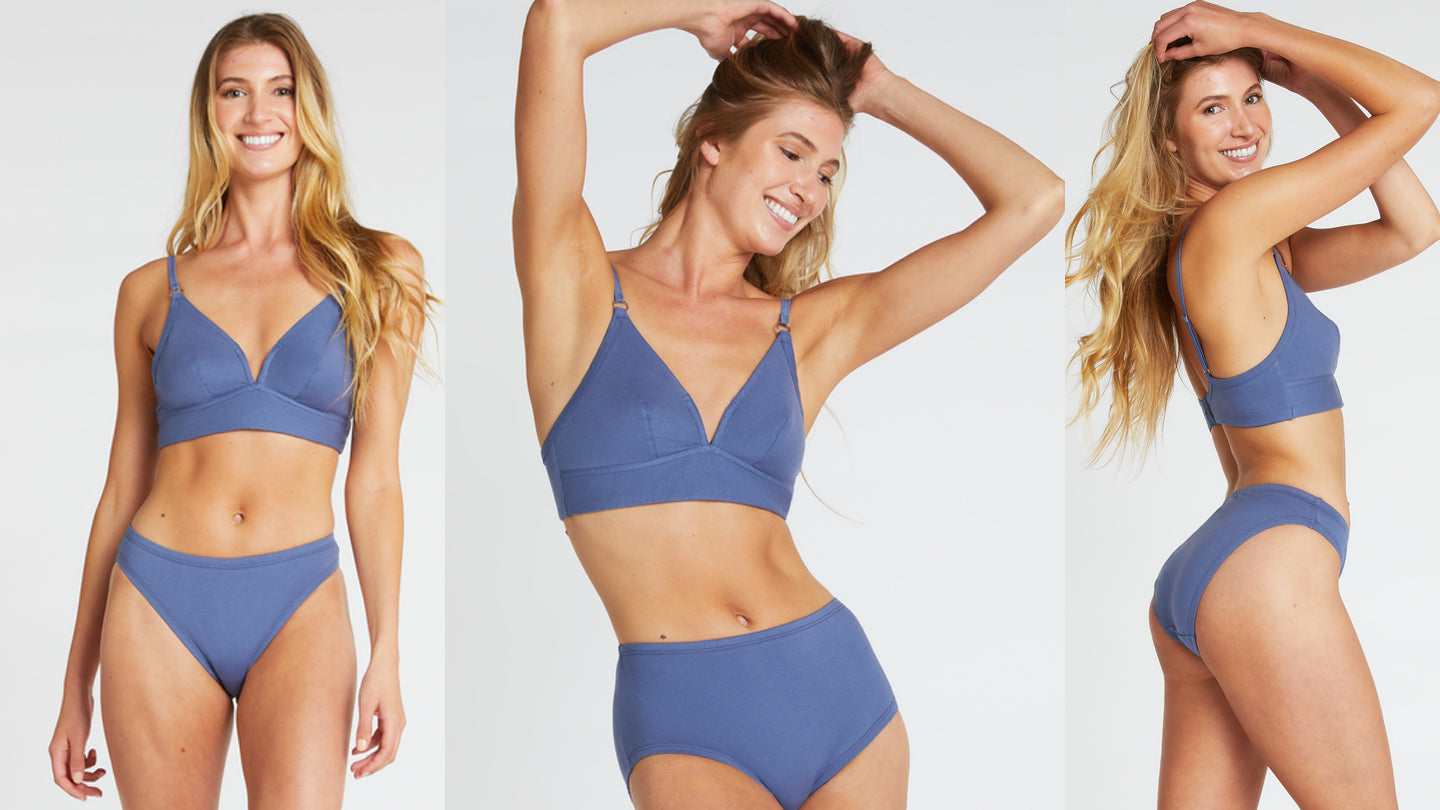In 2016, when I first started working on The Very Good Bra, sourcing 100% compostable materials was my full time job. Of all the materials, elastic was the toughest. Elastic is pretty much all made of nylon/plastic and trawling the internet day and night didn't help me.
One day, I happened upon a dutch agent selling a tree rubber elastic knitted into organic cotton (my issue was that in Europe it was called elastic 'ribbon' and so not coming up on searches) and I started chasing her for samples. It's actually quite hard to engage people on the other side of the planet - for Europeans, the 'market' IS Europe, and so on my annual pilgrimage to family in the UK, I flew over to Amsterdam and caught a 3 hour train to Roermond, on the border with Belgium, where I finally hunted down the agent for this elusive elastic, world-first elastic!
Within a year or so, I was introduced personally to Mandy, so that I could negotiate my elastic needs direct, and we have been working together ever since. To date, Mandy is still the only person making a 100% compostable elastic, and it's been heartening to see how her story has parallels with my own in terms of perseverance and dogged determination
Meet Mandy - Founder and CEO of Charleberlin and creator of our tree rubber elastic strapping!
1) What made you embark upon making this unique elastic?
I founded the label "CHARLE - sustainable kids fashion" in 2010. It was important for me to build a completely sustainable supply chain that complied with the GOTS criteria. During my research I realized that not all ingredients of a GOTS certified garment have to be of organic origin. For example, ingredients such as yarns, cuffs or elastics can also be synthetic. I wanted to change that for my garments. Finding yarns and cuffs in organic quality was not the problem. But I couldn't find any elastics in actually organic quality. So, I decided to produce it myself.
2) How did you find a suitable factory and how long did it take to get a finished product you were happy with?
At first, I had to find out what I was looking for. At the time, I didn't know that the manufacturer of elastics was a ribbon weaver. First, I searched in Germany, as I had already set up the entire supply chain for my children's clothing in Germany.
The result was disappointing. No one was interested in my idea. One elastic expert, who was not averse, insisted on a minimum purchase quantity of 100,000 running meters. But what should I to do with this huge quantity for my children's clothing? I continued to search in Austria and came across my current partner company. He also declined at first by the way. However, his rejection left a little hope open. I invited him to my booth at an Austrian sustainability fair in Linz. That was in the fall of 2011. He was enthusiastic about my children's fashion but still had no interest in a co-operation. In the summer of 2012, I exhibited once more in Austria at a trade fair in Vienna. Again, he accepted my invitation and this time I was able to persuade him to give it a try. However, I had to guarantee him that I would get him the ingredients. After a few failed attempts, I finally held the first organic rubber band in my hands at Christmas. And it was perfect.
Just quietly - this is the factory in Austria where the elastic is made, pretty cool hey?!

3) I know that my orders are increasing, how much is your supply business growing overall in say the last 3 years?
From last year to this year by 300%.
4) Why do you think consumers are shifting more towards products like yours?
The issue of climate change as a result of the overexploitation of resources and the globally increasing environmental pollution has reached the heart of society. We know that we have to focus on circular products, among other things, in order to avert major catastrophes. Younger people between 20 and 30 in particular are focusing on alternatives to conventional products.
5) Are your brand customers smaller businesses rather than large corporates and why do you think this is?
Yes exactly. Our customers tend to be fashion/product designers and smaller fashion brands. But there are now also a number of interested parties from larger brands and corporations. But they are still having a hard time making the switch. There are various reasons for this. I would like to briefly outline two major reasons: on the one hand, they have to rethink and redesign their products; on the other hand, they are used to absurdly low procurement prices. In addition, their internal structures are far too rigid to switch consistently and quickly to sustainable alternatives. The idea of maximizing profits prevents them from making a radical environmentally friendly and socially responsible change.
6) Why do you think no-one has created this product before?
The demand is missing.
The fact is that if even internationally recognized eco textile standards allow that a finished dress, for example, does not have to be made of 100% ecological materials, demand remains low, especially for sewing ingredients. The consumer does not even know that synthetic elastic has been used in his eco-certified textile. If no one asks about it, the manufacturer has no reason to change anything. Unless he wants to.
7) Creating something brand new, from scratch, is exhausting (I know this by experience!) what keeps you motivated?
Curiosity is my biggest motivator.
8) Despite a growing business, how do you wind down and relax?
I like to be in nature whenever I can and I like to be active. I love hiking because I can zone out and relax very well. I also get a lot of energy from good conversations with other people.
Every now and then I take on extraordinary challenges, such as running 100 km in 24 hours.











